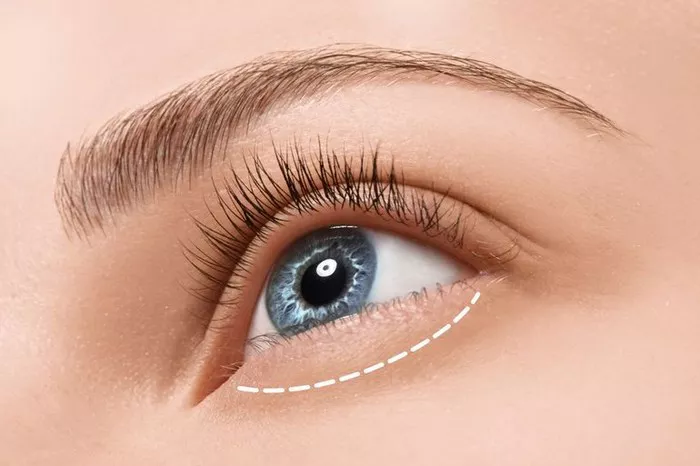Eye bags, also known as under-eye bags or puffiness, can be a common cosmetic concern for many individuals. While there are various non-surgical treatments available to address this issue, some cases may require surgical intervention for optimal results. In this article, we will explore different surgical procedures that can effectively remove eye bags and provide a rejuvenated appearance to the under-eye area.
Understanding Eye Bags
Eye bags refer to the swelling or puffiness that occurs under the eyes. They can be caused by several factors, including:
Fat Pads: With age, the fat pads that normally support the eyes can protrude and create a puffy appearance.
Loose Skin: The delicate skin around the eyes can lose elasticity over time, leading to sagging and the formation of bags.
Fluid Retention: Fluid can accumulate in the under-eye area, resulting in temporary puffiness, especially upon waking up or after a long day.
Genetic Predisposition: Some individuals may have a genetic predisposition to developing eye bags, regardless of age or lifestyle factors.
Surgical Procedures to Remove Eye Bags
While non-surgical treatments such as fillers, lasers, and topical creams can provide temporary improvements for mild cases of eye bags, surgical procedures offer more long-lasting and significant results. Here are some surgical options commonly used to remove eye bags:
Lower Eyelid Blepharoplasty
Lower eyelid blepharoplasty is a surgical procedure specifically designed to address under-eye bags and sagging skin. It involves making discreet incisions below the lower eyelashes or inside the lower eyelid to access the underlying tissues. The surgeon then removes or repositions excess fat, tightens loose muscles, and trims any excess skin. This procedure provides a more youthful and rejuvenated appearance to the under-eye area.
Transconjunctival Blepharoplasty
Transconjunctival blepharoplasty is a specialized form of lower eyelid blepharoplasty that is suitable for individuals who have excess fat but minimal skin sagging. In this procedure, the incisions are made inside the lower eyelid, avoiding any external scarring. The surgeon accesses and removes or repositions the excess fat pads, resulting in a smoother and more refreshed under-eye area.
Canthopexy or Canthoplasty
Canthopexy and canthoplasty are surgical techniques often performed in conjunction with lower eyelid blepharoplasty. They address the laxity or drooping of the outer corner of the eyes, known as lateral canthal laxity. These procedures involve tightening and repositioning the supportive structures of the outer corner of the eyes, creating a more lifted and youthful appearance.
Fat Repositioning
In some cases, rather than removing the fat pads responsible for eye bags, the surgeon may choose to reposition the fat to fill in areas of volume loss or hollowing in the face. This technique is often combined with lower eyelid blepharoplasty to achieve a harmonious and natural-looking result.
Choosing the Right Procedure
The choice of surgical procedure to remove eye bags depends on several factors, including the extent of the bags, the presence of excess skin, and the individual’s specific goals. During a consultation with a board-certified plastic surgeon, they will evaluate your condition and recommend the most appropriate surgical approach to achieve the desired results.
It’s important to have realistic expectations and understand that surgical procedures have associated risks and potential complications. A skilled and experienced surgeon will thoroughly explain the procedure, discuss potential risks, and help you make an informed decision about the most suitable course of action for your unique situation.
Recovery and Results
The recovery process and timeline following eye bag removal surgery can vary depending on the specific procedure performed. However, here are some general guidelines:
Initial Recovery: After surgery, you will experience some swelling, bruising, and mild discomfort in the treated area. Your surgeon may prescribe pain medication and provide instructions for proper wound care. Applying cold compresses and keeping your head elevated can help minimize swelling.
Suture Removal: If sutures are used, they are typically removed within one to two weeks following the surgery.
Healing Process: Over the following weeks, swelling and bruising will gradually subside, and you will start to see improvements in the under-eye area. It’s important to follow your surgeon’s post-operative instructions, avoid strenuous activities, and protect your eyes from sun exposure during the healing period.
Long-Term Results: Once the initial healing phase is complete, you will begin to enjoy the long-term results of your eye bag removal surgery. The under-eye area will appear smoother, more rejuvenated, and refreshed. The results of the surgery are long-lasting, but it’s important to remember that the natural aging process will continue. Taking care of your skin, practicing good lifestyle habits, and protecting your eyes from sun damage can help maintain the results for an extended period.
Conclusion
Eye bags can be effectively treated with various surgical procedures that address the underlying causes of puffiness and sagging in the under-eye area. Surgical options such as lower eyelid blepharoplasty, transconjunctival blepharoplasty, canthopexy, and fat repositioning can remove or reposition excess fat, tighten loose skin and muscles, and provide a rejuvenated appearance to the eyes.
If you are considering surgical intervention to remove eye bags, it is crucial to consult with a qualified and experienced plastic surgeon. They will assess your specific concerns, discuss your goals, and recommend the most appropriate procedure to achieve optimal results. With proper pre-operative planning, skilled surgical techniques, and diligent post-operative care, you can enjoy a smoother, more youthful under-eye area and regain confidence in your appearance.


